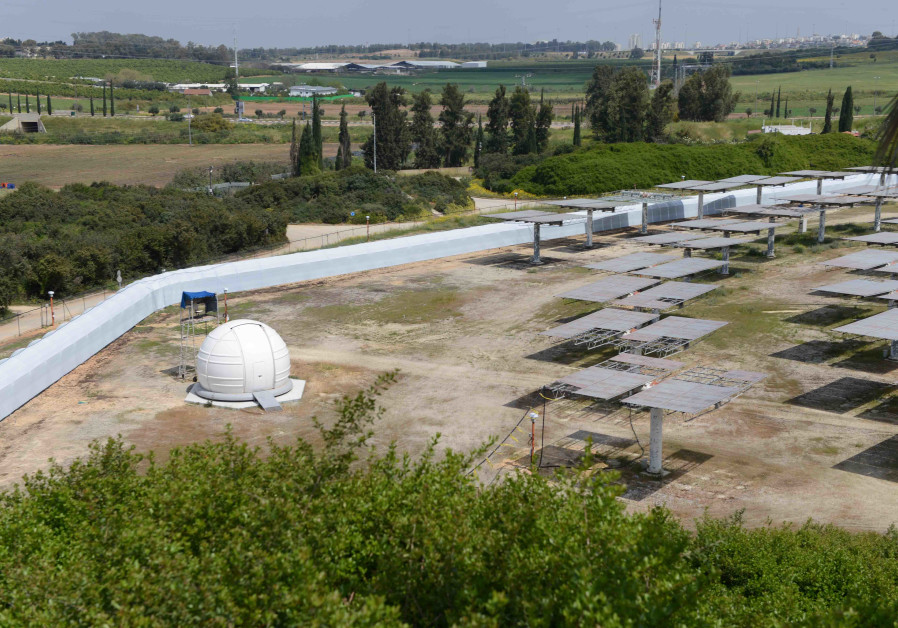The study, which was published on Thursday in the Science scientific journal, found that the spatial models that have been used for the past half-century have been incomplete.
If the human brain were to be likened to a computer, neurons - cells within the nervous system that transmit information to other nerve cells, muscle, or gland cells using electrical signals - would be considered the 'hardware' of the device.
The 'software,' which dictates the neurons' behavior, would be a series of several neuronal codes.
The scientists' research elaborates on the research of John O'Keefe, who 50 years ago discovered 'place cells,' specialized neurons in the hippocampus – the brain region responsible for memory storage – each of which was found to be activated when a lab animal enters a particular space in its environment, called the place field.
For this discovery, O'Keefe was awarded a Nobel Prize in Medicine in 2014.
A joint activation of many place cells builds up an inner map of the environment, which enables the mammal to navigate the space.
However, the work of O’Keefe and others was performed on rodents navigating in small environments, such as a one-by-one-meter box – so the place cells in their hippocampus could accommodate the required number of place fields, each corresponding to an area of about 10 centimeters in diameter.
“In one night, a bat can cover an area that is about 20 kilometers long, two kilometers wide and half a kilometer high. This is very different from the one square meter boxes that constitute the traditional experimental setups.”
If indeed each place cell in the animal’s hippocampus represents one singular small space in the environment, then bats would need more neurons than their hippocampus holds in order to carry out the correct computation for the span of their multi-kilometer flight routes – and yet they still manage to navigate.
TO ATTAIN a closer-to-natural take on spatial perception, the team – which was led by PhD students Tamir Eliav and Shir Maimon, together with Dr. Liora Las, an Associate Staff Scientist working with Ulanovsky - realized they had to expand the parameters of the research.
The team hypothesized that a change in the scale of the experiment would translate to a difference in neuronal activity.

To record the activity of neurons in the fruit bats' hippocampus, the team outfitted their heads with a miniature "neural logger" device that they had developed.
In addition, antennas were mounted on the bats, in order to provide more accurate location capabilities than GPS can provide.
Due to their unique experimental setup, Ulanovsky and his team were able to add a significant piece to the spatial cognition puzzle, finding that when bats navigate a large environment, place cells shift their behavior completely from the traditional model.
The researchers found that a single neuron can represent multiple place fields, rather than just one, as was thought in the past. Each neuron can be activated by several locations, and each represented location may differ dramatically in size.
According the the researchers, their newer, "multi-field, multi-scale coding scheme" can explain the discrepancy left behind by the traditional model, wherein more neurons are required for computing navigation than actually exist in the animal's hippocampus.
In order to expand further on the experiment's findings, Ulanovsky collaborated with theoreticians Prof. Misha Tsodyks, a departmental colleague from Weizmann, and Dr. Johnatan Aljadeff, a former postdoctoral fellow at Weizmann - now a professor at the University of California in San Diego - to create a computerized simulation of the newly discovered code.
When comparing the new code to the traditional model, they found that the new code is far more efficient and performs fewer location errors in larger environments. This is as opposed to smaller spaces, where the team found no significant difference between the two codes.
"Additional theoretical modeling supplied a potential mechanistic explanation as to how and where this code is formed in the mammalian hippocampus," Ulanovsky says. "We believe that our findings are applicable to spatial perception of very large environments across mammalian species, including humans."
